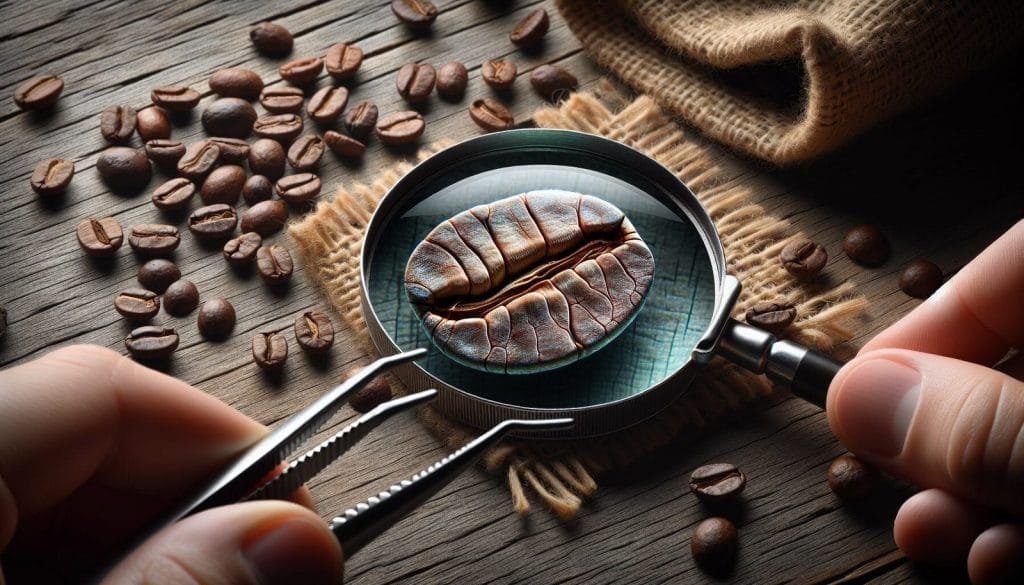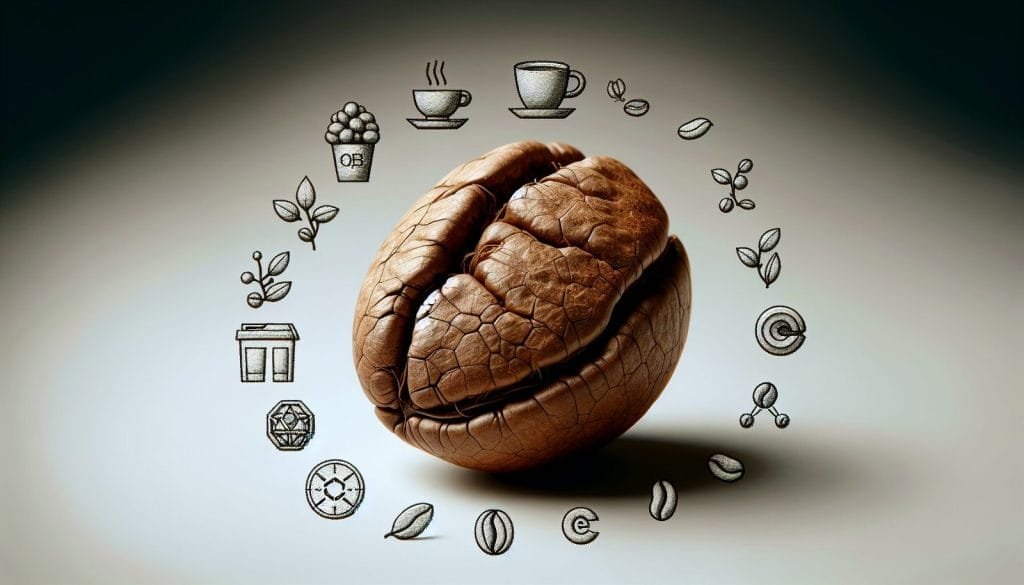In the vast world of coffee, there’s more to it than just the aromatic and energizing beverage many of us rely on each morning. Did you ever wonder what lies beyond the java we consume? Well, it turns out that coffee beans have a protective outer layer, but have you ever stopped to think about what it’s called? This article will unveil the intriguing name of the coffee bean shell, shedding light on this lesser-known aspect of everyone’s favorite morning pick-me-up. Have you ever wondered what the coffee bean shell is actually called? You may have heard various terms like “chaff” or “perisperm” thrown around, but let’s dive deeper into the anatomy of a coffee bean to uncover the true name of each layer. From the outermost layer to the innermost core, each part contributes to the unique flavors and characteristics we find in our beloved cup of coffee. So grab your favorite brew and let’s explore the fascinating world of the coffee bean shell.

The Anatomy of a Coffee Bean
Before we delve into the specific names for the coffee bean shell, let’s take a moment to appreciate the overall anatomy of this precious little bean. A coffee bean consists of several distinct layers, each playing a crucial role in the composition and taste of the final product. These layers include the exocarp, mesocarp, endocarp, silverskin, parchment, perisperm, dregs, and cascara. By understanding the function and properties of each layer, we can gain a deeper understanding of how our cup of coffee comes to life.
The Outer Layer: Exocarp
At the outermost layer of the coffee bean shell, we find the exocarp. This is the skin of the coffee cherry, the fruit where coffee beans are derived from. The exocarp is usually thin and brightly colored, ranging from green when unripe to red or yellow when ripe. Its primary function is to protect the coffee bean from external elements while providing a vibrant hue to the cherry itself.
The Middle Layer: Mesocarp
Beneath the exocarp lies the mesocarp, also known as the pulp or flesh of the coffee cherry. This layer is usually soft and moist, encompassing the majority of the fruit’s mass. The mesocarp plays a vital role in nurturing the coffee bean as it develops, providing essential nutrients and sugars. It is this layer that contributes to the sweetness and body of the final cup of coffee.
The Inner Layer: Endocarp
Next in line is the endocarp, the innermost layer of the coffee bean shell. Also called the parchment, this layer serves as a protective barrier, shielding the precious coffee bean from potential harm. The endocarp is often paper-like in texture, providing the necessary support and structure to the bean. It is worth noting that the parchment is usually removed during the coffee processing stage.

The Silverskin: Chaff
Underneath the parchment lies the silverskin, known colloquially as “chaff.” This layer is thin, silver-colored, and often adheres tightly to the coffee bean. While it may not play a significant role in the flavor profile, it tends to flake off during the roasting process, adding a distinctive visual element to the roasted coffee beans.
The Unroasted Coffee Bean: Parchment
Before the coffee beans undergo the roasting process, they are often referred to as “parchment.” This term harks back to the previous mention of the endocarp, as it denotes the presence of the parchment layer that protects the bean. Unroasted coffee beans vary in color, ranging from green to pale yellow, and can be stored for extended periods without losing their quality.
The Roasted Coffee Bean: Perisperm
Once the coffee beans have been subjected to the roasting process, they transform into what is commonly referred to as the “perisperm.” This term is used to describe the edible part of the coffee bean that we grind and brew into our favorite blends. The roasting process brings about a myriad of chemical reactions, unlocking the unique flavors, aromas, and complexities found within the coffee bean itself.
The Ground Coffee: Dregs
Once the roasted coffee beans have been ground, they become what is known as “dregs” in the coffee world. The term “dregs” refers to the remnants of the coffee, such as the fine particles and sediment that settle at the bottom of your cup or coffee pot. While some may consider these dregs undesirable, they can contribute to a fuller-bodied and more intense flavor experience.
The Coffee Cherry Pulp: Cascara
If we take a step back to the entire coffee cherry, it’s important to highlight the coffee cherry pulp, often known as “cascara.” While not specifically referring to the coffee bean shell, cascara is a noteworthy term associated with the outer fruit layer. Cascara is traditionally used to produce a tea-like beverage, boasting its own unique flavors and characteristics separate from the coffee bean itself.
Other Names for the Coffee Bean Shell
In addition to the various layers discussed above, there are other terms used to describe the coffee bean shell. Some may refer to it simply as “the shell” or “the husk,” highlighting its protective function. Others may use more specific terms like “pergamino,” which is the Spanish word for parchment. These alternative names further demonstrate the diversity of language and the rich culture surrounding coffee.
In conclusion, the coffee bean shell encompasses multiple layers, each playing a role in the development, protection, and flavor profile of the coffee bean. From the colorful exocarp to the delicate parchment, and from the chaff to the perisperm, each layer adds its own unique touch to the final product we enjoy as coffee lovers. So next time you savor that perfect cup of coffee, take a moment to appreciate the intricate layers within the coffee bean shell that contributed to its exceptional taste.




